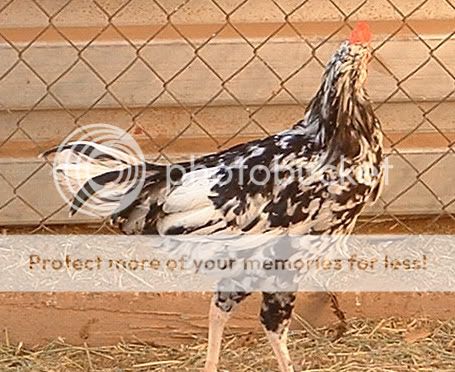- Thread starter
- #21
Hey Tim!
Okay, I went to "Feathersite" and read what it had to say about autosexing red birds. I think I maybe am starting to understand this maybe a little? Tell me if I've got it or not!
So, it seems like while the idea of first getting red/white/black mottled, and then using a solid buff breed to get rid of the black areas may work - eventually - but it would be much harder due to other genes floating around there, and this suggestion would be a kind of shortcut?
Quote:
Okay, here's a quote I read from Feathersite about it:
"Red Sex-Links are the result of various crosses. White Rocks with the silver factor (the dominant white gene would produce all white offspring) are crossed with a New Hampshire male to produce the Golden Comet. Silver Laced Wyandotte crossed with New Hampshire gives the Cinnamon Queen."
(there is more on the site about the crossbreeds, here's the link
http://www.feathersite.com/Poultry/CGP/Sex-links/BRKSexLink.html
If I understand this right . . . the "silver" or "silver laced" gene on these two crosses, would BLOCK the black-colored areas of the feather - the black would still genetically sort of "be there" but would be masked by the white color instead???
So that black tail tip and wing tips, would be white, and then the mottling would be laid on top of that?
And then the overall effect would be a red chicken with white mottling, but it would show more white than a black/white/red chicken, because the black tail/wing areas would be masked by the white gene?
And that is why you suggest using red sex linked hens with "more red the better" because the white would actually be hidden black? So more red means more contrast against the mottling?
Did I get that right at all?? LOL!
And if I did, "get it" - is there a particular cross of autosexing red that would work better than the others?
Thanks!

Okay, I went to "Feathersite" and read what it had to say about autosexing red birds. I think I maybe am starting to understand this maybe a little? Tell me if I've got it or not!
So, it seems like while the idea of first getting red/white/black mottled, and then using a solid buff breed to get rid of the black areas may work - eventually - but it would be much harder due to other genes floating around there, and this suggestion would be a kind of shortcut?
Quote:
Okay, here's a quote I read from Feathersite about it:
"Red Sex-Links are the result of various crosses. White Rocks with the silver factor (the dominant white gene would produce all white offspring) are crossed with a New Hampshire male to produce the Golden Comet. Silver Laced Wyandotte crossed with New Hampshire gives the Cinnamon Queen."
(there is more on the site about the crossbreeds, here's the link

http://www.feathersite.com/Poultry/CGP/Sex-links/BRKSexLink.html
If I understand this right . . . the "silver" or "silver laced" gene on these two crosses, would BLOCK the black-colored areas of the feather - the black would still genetically sort of "be there" but would be masked by the white color instead???
So that black tail tip and wing tips, would be white, and then the mottling would be laid on top of that?
And then the overall effect would be a red chicken with white mottling, but it would show more white than a black/white/red chicken, because the black tail/wing areas would be masked by the white gene?
And that is why you suggest using red sex linked hens with "more red the better" because the white would actually be hidden black? So more red means more contrast against the mottling?
Did I get that right at all?? LOL!
And if I did, "get it" - is there a particular cross of autosexing red that would work better than the others?
Thanks!





